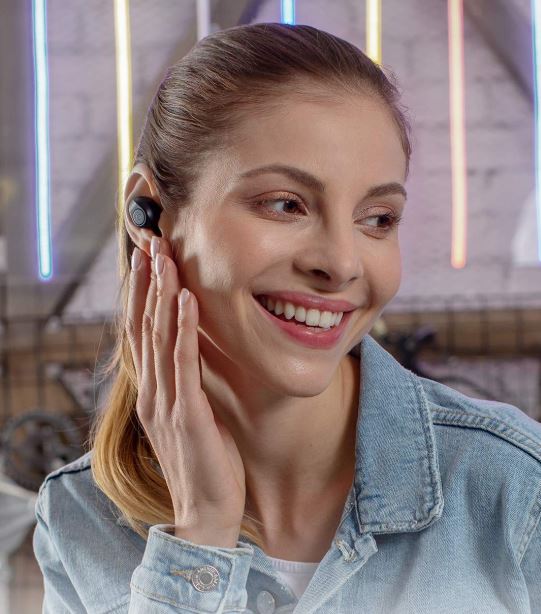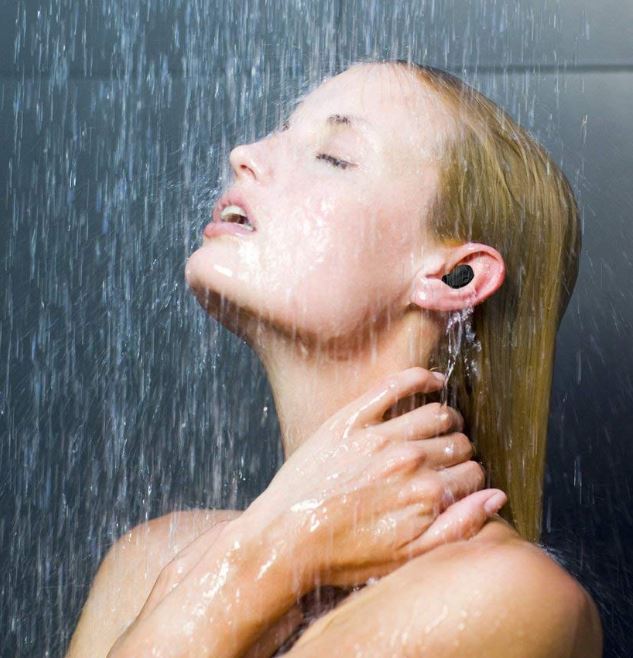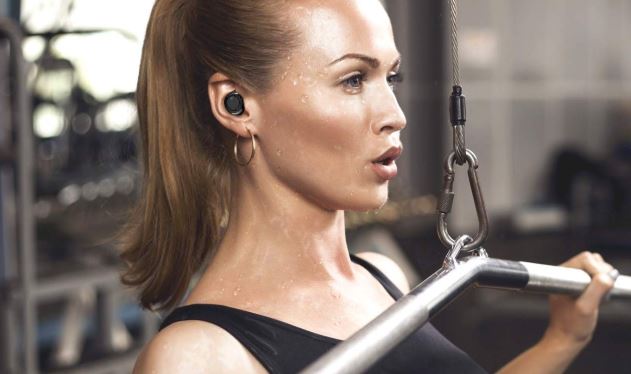If you spend a lot of time shopping for earbuds – or any consumer electronics – you’ve probably seen an IP rating. This rating will usually be expressed as: IPXY, with the Y, and sometimes the X, replaced by numbers. Typically, manufacturers will include this rating in their product description. It’s a measurement of how resistant their products are to dust and water.
But unless you’re already an expert, you probably don’t know what these numbers mean. Is IPX4 good? Is it bad? Should you carry around a chart like a football coach, just so you can buy some earbuds? We’re going to explain what these numbers mean, so you can shop with confidence.
Going Over The Basics
IP is short for “International Protection”, although many manufacturers incorrectly use the term “Ingress Protection”. This is an international standard that measures how resistant a product is to dust, dirt, and water. The rating is issued based on standardized tests, much like IIHS subjects different cars to identical crash safety tests.
The rating is written in a standard format. The first two letters, IP, are always the same. After that, you’ll see a pair of letters or numbers. Sometimes, there will be additional number separated by a slash. Those types of ratings are unusual, though, and we’ll explain them at the very end. Each letter or number has a different meaning.

The first number after the “IP” tells you how resistant the product is to dust, dirt, and other solids. A designation of 0 means that there’s no dust protection whatsoever. An “X” means that the product wasn’t tested. Since most people aren’t worried about their earbuds getting dust inside, most earbuds are rated as IPX. Actual tests are typically performed on computers, smartphones, speakers, and other devices where dust is an real concern. Beyond that, there are 6 different levels of dust protection. We’ll discuss them in more detail in the next section.
After the dust rating, the second number tells you how water-resistant the product is. Keep in mind that all fluids have different viscosity and surface tension. So just because a pair of earbuds are water-resistant doesn’t mean that they’re gasoline or alcohol-resistant. Much like the dust resistance rating, a rating of 0 indicates no water resistance whatsoever. It’s also technically possible for the rating to be replaced by an “X”, meaning it wasn’t tested. In practice, you won’t see this with consumer electronics.
In addition, some devices have a final designation that’s displayed as a letter. These indicate that the product is rated to withstand extra conditions that aren’t always tested for. “H” indicates that the device is resistant to a high-voltage current. “M” indicates that the device was moving while it was tested for water resistance. “S” indicates that the water test was only conducted while the device was standing still. “W” indicates resistance to extreme weather conditions and temperatures. Finally, an “F” means that the device is oil-resistant.
For example, suppose a pair of earbuds are rated IPX6W. This means that they weren’t tested for dust resistance, they’re water-resistant, and they can withstand extreme weather.
IP Dust Rating
Now that we’ve covered the basics, it’s time to get into the nitty-gritty. And when it comes to dust resistance, we put emphasis on the “gritty” part of that equation. What do these numbers actually mean? Here’s a quick rundown:
- IP1X – These devices are resistant to objects larger than 50mm (about 2 inches) in diameter. They’re not dust-resistant, but you won’t be able to stick your hand inside.
- IP2X – These devices will not admit an object larger than 12.5mm (about half an inch). So you won’t be able to stick a finger inside.
- IP3X – This rating indicates that the largest opening is smaller than 2.5mm (about a tenth of an inch). Wires, pins, and small screws can still get inside.
- IP4X – At this point, the largest opening is 1mm or smaller. The largest thing that can get inside is a narrow-gauge wire.
- IP5X – These devices aren’t entirely dust-resistant, but dust will not interfere with operation. However, you might have trouble in an extremely dusty environment. For example, a construction site full of concrete dust.
- IP6X – A device with this rating is completely impervious to dust. To receive this designation, a vacuum is applied to the device for 8 hours. If no dust has entered, the device receives a coveted “6”.

IP Water Rating
As we’ve already mentioned, most earbud manufacturers don’t test for dust resistance. It’s not a major concern for most people. So you’ll usually see a rating that begins with IPX. That said, water resistance is a significant concern. So let’s talk about what the last part of the IP rating actually means.
- IPX1 – An IPX1-rated device is resistant to water drops that are falling vertically. The device is tested on a turntable, with water dripped over it for 10 minutes. The rate of water flow is equivalent to 1mm of rainfall per minute. Most devices achieve this rating, even if only by accident.
- IPX2 – To achieve this rating, the device must withstand water falling from an angle of 15 degrees. The test is performed in a total of four different positions, to see how it performs from multiple angles. At each angle, the device is tested for 2 ½ minutes, with a water flow equivalent to 3mm of rainfall per minute. This is the bare minimum we’d consider for wireless earbuds. Essentially, what you’re looking at with an IPX2 rating is a small amount of sweat resistance. At this point, you can go running with your earbuds without having to worry about them getting damaged by sweat. That said, you won’t want to wash them under running water. Stick with a damp cloth, and you’ll be A-OK.
- IPX3 – The test for this rating is pretty interesting. It’s a two-part test, which is applied at multiple angles. In the first part of the test, the device is sprayed with an oscillating nozzle. The nozzle oscillates at an angle of up to 60 degrees. This part of the test lasts for 5 minutes. For the second part of the test, the device is rotated horizontally by 90 degrees. It’s then sprayed again for another 5 minutes, with a shield in place behind it.
- IPX4 – Earbuds that are IPX4-rated are often referred to as splash-resistant. The test is similar to the IPX3 test, but it’s performed from all angles. In other words, these types of earbuds need to be water-resistant both at the top and on the bottom. At this point, you can rinse them under a gentle faucet, but a forceful jet of water will still penetrate.
- IPX5 – The test for IPX5 is similar to IPX4, but it’s performed with a jet of water, not just a spray. The jets are low pressure, and shot from all angles for a minimum of 10 minutes.
- IPX6 – At this point, the earbuds are tested with more powerful water jets. An IPX6-rated device is safe to take in the shower, so look for this rating if you want shower-safe earbuds. That said, they’re still not rated for submersion. So if you drop them in the sink while you’re washing dishes, you might experience some failure. For most workout purposes, IPX6 is more than sufficient. Even if you get caught in heavy rain, you won’t have any issues.
- IPX7 – This rating indicates that the earbuds are rated to withstand complete submersion. In this test, the earbuds are submerged to a depth of 15cm (about 6 inches). Over the course of 30 minutes, they’re lowered to a depth of 1 meter (just over 3 feet). If they’re still working when they’re pulled out, they receive an IPX7 rating. This is the highest rating you’ll normally see on a pair of earbuds.
- IPX8 – This is a custom rating. The earbuds can be submerged to deeper depths for a longer period of time. The exact criteria are set by the manufacturer. If you see this rating, look for the precise depth and time.
- IPX9 – This rating is almost never used with consumer electronics, but it’s worth mentioning. IPX9-rated devices are designed to withstand powerful, high-temperature water jets. You’ll generally only see it for automotive products that need to survive a trip through the car wash.

Are Immersion-Rated Earbuds Also Jet-Proof?
You’d think that an IPX8-rated pair of earbuds would also be IPX6-rated, right? After all, surely submersible earbuds can stand up to a little bit of spray. Unfortunately, this isn’t always the case. Submersion in water simply requires that the earbuds can stand up to moderate pressure from all sides. Standing up to a jet requires them to resist higher pressure from a single direction.
To help with this, some manufacturers will subject their earbuds to multiple tests. We’ve seen earbuds that are rated as IPX6/8, IPX5/7, and even IPX4/7. When in doubt, never make an assumption. Check the manufacturer’s specifications, and see what they’re willing to put in writing. That way, you’ll be 100 percent certain that you know what you’re getting.
Meet Ry, “TechGuru,” a 36-year-old technology enthusiast with a deep passion for tech innovations. With extensive experience, he specializes in gaming hardware and software, and has expertise in gadgets, custom PCs, and audio.
Besides writing about tech and reviewing new products, he enjoys traveling, hiking, and photography. Committed to keeping up with the latest industry trends, he aims to guide readers in making informed tech decisions.

